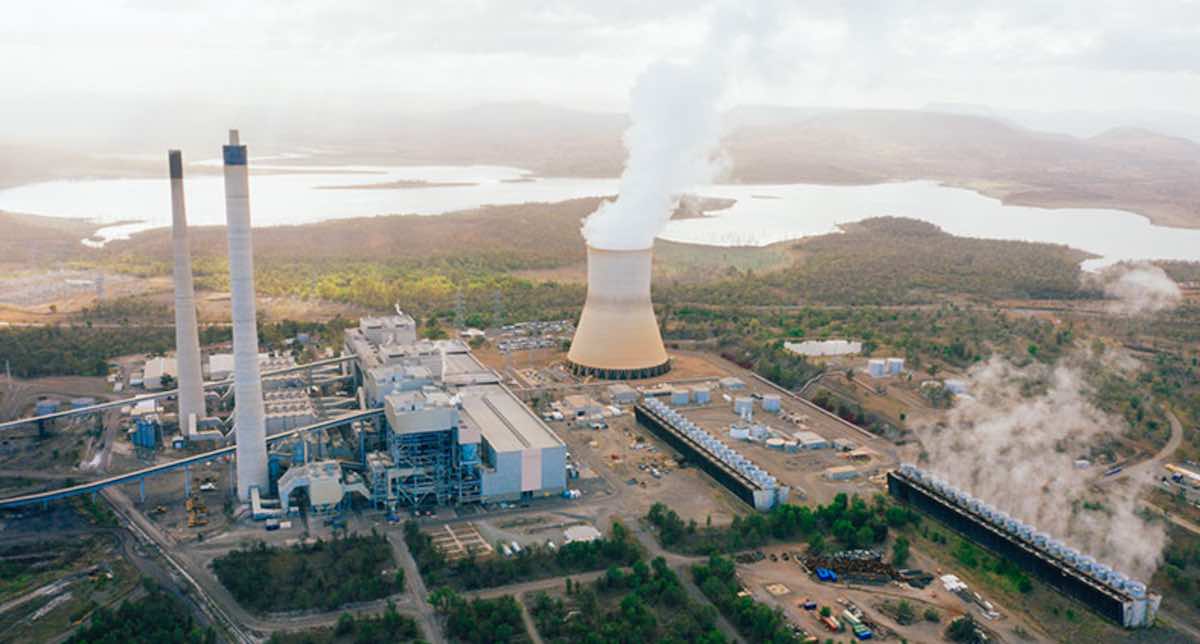The explosion of the Callide C4 coal fired power station was an “extraordinary sequence of events” that couldn’t have been predicted, says plant operator CS Energy CEO Darren Busine.
The company’s technical report into the cause of the explosion in May 2021, released on Tuesday just hours before another major power system event in Victoria, found that voltage within a new battery charger collapsed, which then tripped multiple different circuits and removed safety controls at the same time.
The accident then caused the snow-ball tripping of multiple other power stations throughout Queensland, taking 3,045MW of generation offline and forcing 2,300MW of customer load – predominantly homes and businesses – to be disconnected from the grid.
The company was not able to answer a direct question about why the battery charger failed.
Busine says the full report by forensic engineer Dr Sean Brady is unlikely to be released in full to the public but was largely finished late last year.
He was at pains this week to emphasise how unpredictable the outage was.
“The voltage in the DC system unexpectedly dropped to zero, causing a trip in the AC system. The loss of the AC system then prevented the recovery of the DC system,” he says.
“This was an extraordinary chain of events which we could never have anticipated. And once in train, none of the backup systems were able to avert it became an unstoppable sequence of events which led to the emergency evacuation of the site ahead of the eventual destruction of the generator.
“This happened within seconds and what’s important to understand also is that the control room went black.”

The Australian Energy Regulator (AER), however, started legal proceedings in the federal court for breaches of National Electricity Rules last week, alleging Callide Power Trading, the registered market participant for Callide C, failed to ensure safety operations could disconnect the plant from the grid, which caused outages at other stations, and failed to ensure it met or exceeded performance standards.
CS Energy says it has made a number of design changes in the C4 unit including installing an extra switchboard, battery and battery charger as failsafes to ensure a similar collapse doesn’t happen again. It has also made changes at its other plants Callide B and C and Kogan Creek.
The C4 unit is expected to be operational again by the end of July.
As part of its investigation into the explosion the AER also found CS Energy didn’t have regulatory approval to run the Callide power plant and fined the company $67,800, which it has since paid.
Root cause was unexpected drop in charger voltage
The technical report pinned the issue on the installation of the C4 unit’s new battery charger, which was part of an upgrade of all chargers across the Callide C station.
The Callide C power station has backup batteries which are supported by 220V chargers.
During the switchover from a battery charger in a separate circuit that had been running the C4 DC system, the new charger’s voltage had decayed to a point where, once it was the sole supplier of power to the C4 circuit DC circuit, it couldn’t immediately raise the voltage in the circuit to the level required.

When the system switchover took place, the voltage in the battery charger was low enough to cause the AC circuit to trip but not low enough to allow a relay power down system to kick in which would have let the battery recover, nor had it yet reached zero.
Once both AC and DC systems went down, computer systems went down and emergency boards weren’t able to kick in as they’d also loss power.
The loss of DC power meant the unit couldn’t disconnect from the grid, forcing the generator to start using electricity rather than making it and the turbine to continue spinning, but without the systems that keep it functioning such as turbine lubrication oil pumps.









